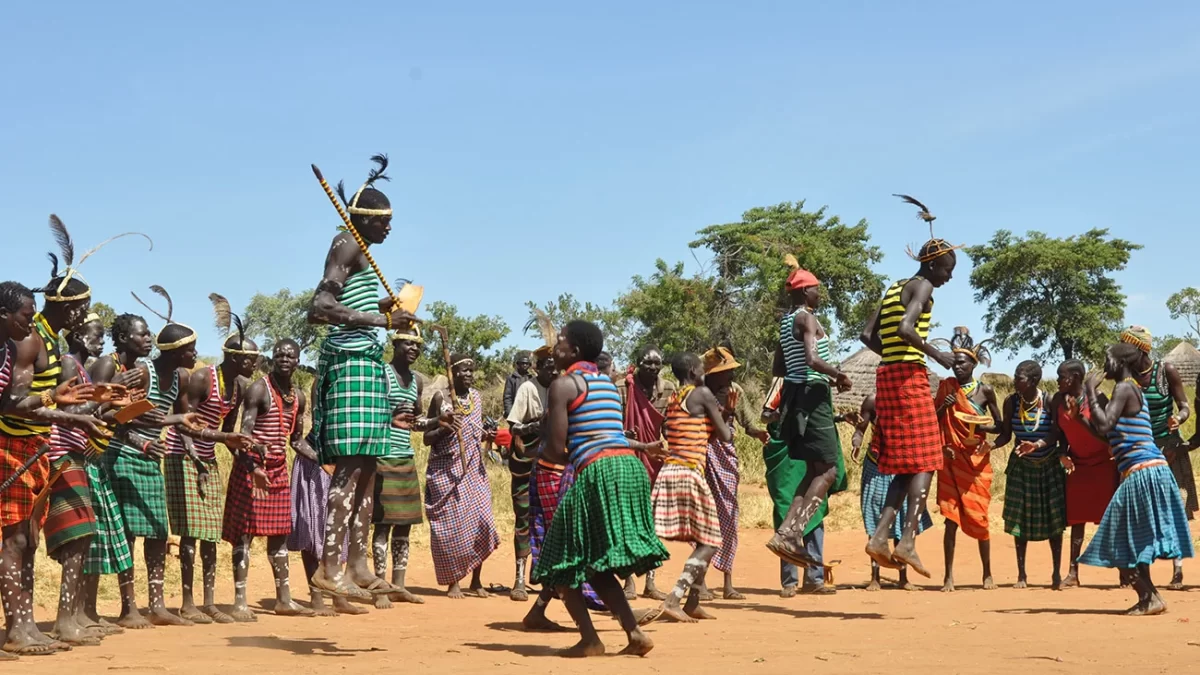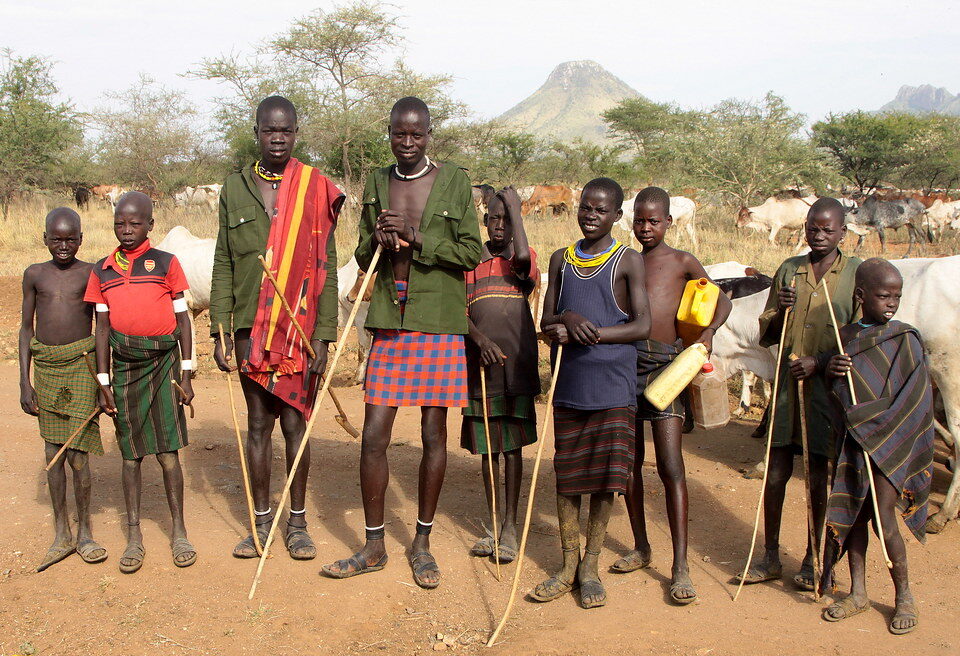Visit the Karamojong People

Where to Stay in Kibale Forest National park
September 15, 2023
Things to do and See in Kigali Rwanda
September 15, 2023Exploring the Karamoja Region: A Journey to the Karamojong People
Embark on a captivating journey to meet the Karamojong people, who inhabit the southern part of the Karamoja region in the northeastern corner of Uganda. This region, covering an area equivalent to one-tenth of Uganda, is home to a unique and resilient community with a rich history and culture.
The Karamojong Heritage
According to anthropologists, the Karamojong are part of a larger group that migrated from present-day Ethiopia around 1600 A.D. This group eventually split into two branches, shaping the destiny of the Karamojong people. One branch moved towards present-day Kenya, contributing to the formation of the Kalenjin group and the Maasai cluster. The other branch, known as Ateker, embarked on a westward migration that led them to their present home in northeastern Uganda. Ateker itself further divided into several distinct groups, including the Turkana in Kenya, Iteso, Dodoth, Jie Karamojong, and Kumam in Uganda, along with Jiye and Toposa in southern Sudan. Collectively, they are referred to as the “Teso Cluster” or “Karamojong Cluster.”
Historically, the Karamojong were initially known as the Jie. The name “Karamojong” evolved from the phrase “ekar ngimojong,” which translates to “the old men can walk no farther.” Tradition holds that these people, now part of the Teso Cluster or Karamojong Cluster, migrated from Abyssinia between the 1600s and 1700s as a unified group. As they reached the modern Kenyan-Ethiopian border area, they fragmented into various subgroups, including those that became the Turkana, Toposa, and Dodoth. The Toposa continued their journey into present-day southern Sudan, while the Dodoth settled in Apule, in the northern part of contemporary Karamoja. The Turkana found their home in Kenya, while the Jie of Uganda are believed to have separated from them, moving up the escarpment to today’s Kotido District. The primary group continued its southward migration, eventually settling in southern Karamoja. Over time, these settlers coalesced into three clans: the Matheniko in the east around Moroto Mountain, the Pian in the south, and the Bokora in the west. However, a significant portion of this group ventured westward and gave rise to the Iteso, Kumam, and Langi communities. This subgroup is said to have coined the phrase “the old men can walk no farther.”
Language and Culture
The Karamojong people and their language are closely related to the Turkana. The Karamoja language employs prefixes ŋi- and ŋa-, while the lack of a prefix indicates the land they inhabit. Importantly, all Ateker branches, including those in Uganda and Kenya, speak mutually intelligible languages. This linguistic connection is shared with the Lango people in Uganda, who exhibit both ethnic and genetic proximity to the ŋiKarimojong.
Livelihood and Pastoral Transhumance
The primary livelihood of the Karamojong revolves around livestock herding, which holds profound social and cultural significance. While crop cultivation is practiced to a lesser extent, it is limited to areas where it is feasible due to the region’s arid climate. Given the challenging environment, the Karamojong have adopted a form of pastoral transhumance. For three to four months each year, they migrate with their livestock to neighboring districts in search of water and pasture. The availability of food and water is a perpetual concern and significantly influences their interactions with neighboring ethnic groups.
Social Organization and Age System
Karamojong society is characterized by a unique age system based on generations. As each generation slightly overlaps with the next, the system inherently contains the seeds of its own breakdown. In the 19th century, neighboring Jie communities began to relax the age system’s rules, leading to a partial collapse. Nevertheless, the Karamojong system displays enough flexibility to manage tension buildup between generations over a 50-year cycle. When conflicts cannot be peacefully resolved, a transition in power occurs, shifting authority from the ruling generation to the next, establishing a new status quo. The next anticipated changeover is expected around 2013.
Traditional Practices and Marriage Rituals
Among the Karamojong, a significant rite of passage into manhood and a prerequisite for marriage involves wrestling. Young Karamojong men must engage in a wrestling match with the woman they intend to marry. Success in this match signifies readiness for adulthood and the privilege of marrying the woman. This practice ensures that the man possesses the strength to provide for and protect his future spouse. After a successful match, dowry negotiations commence. If a young man fails to defeat the woman in wrestling, he is not recognized as a man by his people and often seeks a bride from a different ethnic group where strength-testing is not mandatory. Moreover, non-Karamojong men wishing to marry Karamojong women are also required to participate in this ceremony.
Conflict and Cattle Raids
The Karamojong people have been historically involved in various conflicts, primarily centered around cattle raids. Their frequent clashes with neighboring communities in Uganda, Sudan, and Kenya have deep-rooted causes. Traditional beliefs among the Karamojong assert divine ownership of all cattle, which contributes to the cattle raids. Additionally, cattle play a vital role in marriage negotiations, and young men often undertake raids as a rite of passage and means of increasing their herds to enhance their status.
Recent years have witnessed an escalation in the violence of these raids, primarily due to the acquisition of AK47 rifles by the Karamojong. The Ugandan government has attempted to negotiate weapons amnesties, but the substantial number of cattle demanded in exchange for each firearm has impeded any meaningful agreement.
Visiting the Karamojong people provides a unique opportunity to delve into the history, culture, and way of life of this resilient community. Their traditions, social organization, and rituals offer valuable insights into the rich tapestry of Uganda’s diverse ethnic groups. However, it’s important to approach such visits with respect, sensitivity, and a commitment to understanding and preserving their unique heritage.


